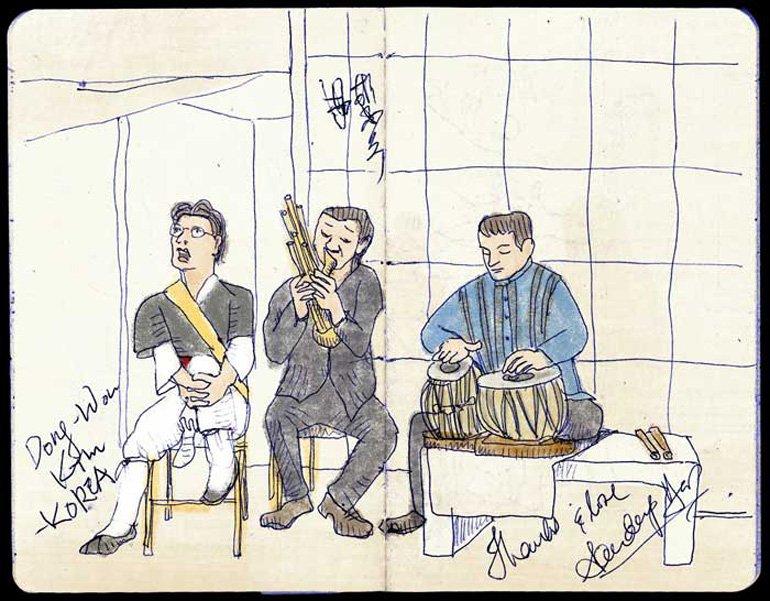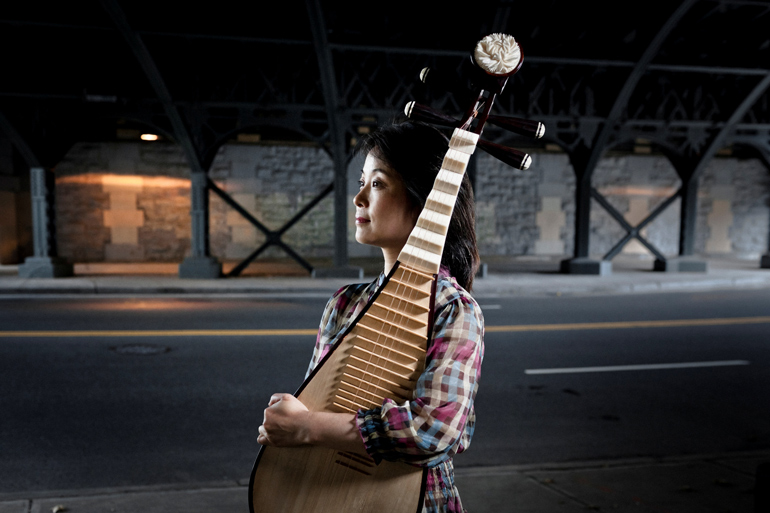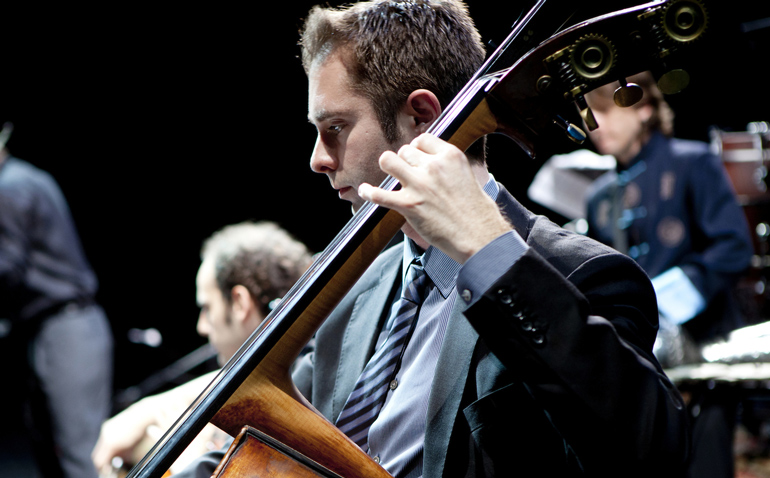
Not many people use the term “world music” these days. It has become a fusty term for life’s mash-up; a samosa for lunch, sushi for dinner, Chinese custard tarts with Irish beer served by a guy from Israel for dessert.
The thought of blending musical cultures is a natural one for the Magpies of the music world. For Tchaikovsky, it was Serbian folk music from the Ottoman Empire. For Messiaen, it was Hindu ‘tâla’ and ancient Greek rhythms derived from plainchant. For Bizet, it was setting ‘Les pêcheurs de perles’ in Sri Lanka. For Massenet, it was setting ‘Le roi de Lahore’ in what is now present-day Pakistan. The list goes on.
This has been one of the main reasons why The Silk Road Project, headed by superstar Cellist Yo-Yo Ma, has become the hot ticket for promoters looking to cash in on culturally diverse cities like Toronto. Last February in New York City, The Silk Road Project sold out well in advance, and Toronto is not far behind.
I had a chance to catch-up with some of the members of the shape-shifting ensemble, and chat about what it means to make music on the modern day highway that stretches a thousand times longer than Yonge St.

Highly regarded as the ambassador of the Pipa (Chinese Lute), Wu Man was among the first to be tapped by founder Yo-Yo Ma to join the Silk Road Ensemble in 1998. Ma’s “crazy idea” was to form a cohort that connects “musicians, composers, artists and audiences around the world,” and “promote multicultural artistic collaboration.”
Broad strokes for different folks recalls Wu Man from her home in Southern California. Still going strong after fifteen years, Man said she initially had no idea that it would become such a huge success. “At the very beginning it was only to be a three-year project. But the turning point was September 11th, 2001. After that, Yo-Yo himself, including all the members, felt that we had to continue. We have so many musicians from Central Asia, Iran, Mongolia, China, all over the world. This was the time to truly understand each other.”
For Wu Man, the convergence between Western classical and traditional Chinese music is surprisingly natural. “When I work with musicians who are not from China, it is a curiosity that makes me want to try to learn how to balance with them. I am interested in stepping out of the ‘Chinese zoom’.”
Man recalls the history of the Pipa as an analogy, “it originated as an instrument from the Persians, and later morphed into the Pipa.”
In terms of how the diversity of musical styles comes together, Man confessed “it takes time – but after fifteen years we know each other very well. We sometimes joke with Sandeep Das, who plays Indian Tabla and doesn’t read music. He just listens; reading music is not his tradition. Musicians like Sandeep have amazing ears – and they can remember all the music.”

For some in the ensemble, such as Toronto’s Jeffrey Beecher, TSO Principal Bass and a longtime member of the Silk Road Project, improvising was new territory.
“It’s a lot of growing pains, but all of us in the group have an area of expertise and a superb ear,” Beecher said. “We’re all are quick studies.”
“After ten years of improv experience with the group, I don’t have the same feeling as I once did getting out in front of Massey Hall not knowing what we’re going to play. It’s still scary but I’m a lot more confident.”
Beecher stressed that “there are many different ways the Silk Road makes music. There is improvisation, as well as written scores from commissioned composers and arrangers in the group. Over the past fifteen years, we are very proud of creating a strong repertoire not only for ourselves but of works taken on by other groups. It’s an inspiring way to make music.”
In regards to leadership, The Silk Road runs an unusual dynamic, where each musician is charged with leading the group at various points. As Beecher explains, Yo-Yo Ma’s approach is a “flattened hierarchical system,” and “he completely let’s go of his authority.”
“Ma is a firm believer that we are more powerful, intelligent and creative collectively,” Beecher said. “You don’t see many leaders having the confidence to do that. It’s really empowering.”
Besides performing, The Silk Road Ensemble have been hard at work on a new CD for 2016, framed around songs from across the world. It will include many recognisable standards such as the classic “St. James Infirmary”, as well as more unfamiliar fare. Guest artists include a Bulgarian Acapella group, contemporary jazz guitarist Bill Frisell, as well as Nonesuch recording artist and singer Rhiannon Giddens.
When asked what people can expect to hear in the upcoming Silk Road performances, Man said “it will be a very colourful repertoire,” and include a rare opportunity to hear “Side In Side Out”, a piece rhythmically inspired by Toronto-based rock band Rush that features the Shakuhachi, played by the Japan’s Kojiro Umezaki.
The programme also includes Romanian Gypsy inspired, “Night of the Flying Horses,” by longtime collaborator and composer Osvaldo Golijov; and “The Latina 6/8 Suite: Tarantella-Muiñeira: Epilogue” by powerhouse Galician bagpiper Cristina Pato. Special guests include Aynur, a celebrated Turkish singer to perform “Layers of Loneliness” by Iranian composer Kayhan Kalhor.
The Silk Road Project is not just about Pipas, Bawus, Gaitas, and Kamanchehs mixed together as exotic and novel curiosities. As Wu Man and Jeffrey Beecher tell us, they are about seeing what happens when music reflects our present day silk road. No genre. No cultural limitations. It’s a song still finding its chorus, but the Silk Road Project seem destined to find it.
For the Silk Road, the search continues in Toronto’s Massey Hall on September 15 (tomorrow!) where the 17-member group will treat spectators to a star-studded performance of music drawing inspiration from cultures along the ancient trade route between Asia and Europe. Details here.
#LUDWIGVAN
Want more updates on Toronto-centric classical music news and review before anyone else finds out? Get our exclusive newsletter here and follow us on Facebook for all the latest.
- THE SCOOP | Royal Conservatory’s Dr. Peter Simon Awarded The Order Of Ontario - January 2, 2024
- THE SCOOP | Order of Canada Appointees Announced, Including Big Names From The Arts - December 29, 2023
- Ludwig Van Is Being Acquired By ZoomerMedia - June 12, 2023



